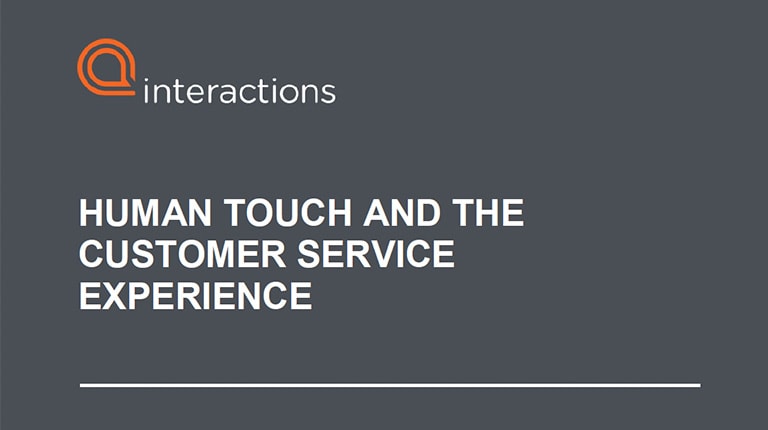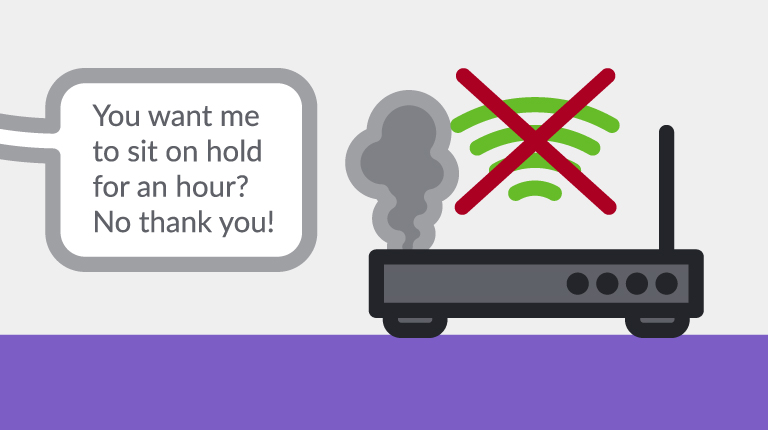At Interactions, we think a lot about customer experience and how seemingly small things can make the difference between good and bad experiences. With all the latest technology for customer care — be it multichannel, omnichannel, personalization, bots or virtual experiences — we wanted to know what consumers were experiencing and whether these changes were making an impact.
To do that, we conducted a survey along with Dr. James E. Katz, Dr. Jacob Groshek and Dr. Jill Walsh from the Center for Research on the Information Society, affiliated with Boston University. Our goal was to better understand current consumer attitudes toward the most widely used customer service interfaces. In the study we asked over 1,300 people about their most recent customer service experiences. Through an online survey, in-depth interviews and focus groups, we focused our questions primarily on interactive voice response systems (IVRs), chat, text, social, and the role of technology in relation to customer service.
Not surprisingly, we heard some familiar themes: customers are frustrated with traditional IVR and other automated solutions. But we also learned a lot about the customer journey to getting the help they need and what’s working – or not – between consumers and the brands they do business with today.
You can read the full study results here, but we wanted to get you started with six key takeaways from our research that demonstrate where some common systems are falling short.
1. It’s Not a Straight Line From A to B
The typical customer service journey is not as straightforward as picking up the phone and calling a contact center. The study found that the majority of consumers start their service journeys online, to either look up company contact information or search FAQs to find a solution or get background information. From there, consumers make strategic decisions about how to contact the company based on both past experiences and the complexity of their question. If customers perceive their question to have multiple parts, they will most often contact the company via phone. The fact that customers begin the service journey online means by the time they reach an IVR, they want a quick and efficient answer to their problem. A major point of frustration? Having to listen to all the points they already know just to get through the IVR menu tree.
2. Traditional IVRs Still Have the Lowest Score
It’s not news to many of us, but the degree of dissatisfaction with IVRs is astonishing. Only 3% of respondents indicated that they liked using an IVR during their most recent customer experience. Customers expressed frustration with the scripted feel of the IVR and with the resulting feeling that they were “stuck in the loop of pressing buttons” with no clear path to resolution. Interestingly, many felt anxious at having to deal with an IVR, saying that they felt as though they had to think through their entire issue beforehand and memorize menu prompts in order to reach the correct contact person. Above all, respondents felt stilted and unable to discuss their problem in an open or natural way, which only led to increased frustration.
“If I’m not at the right place in 2 or 3 beats, I’m not willing to keep trying things on a menu.”
3. Technology Needs to Speak the Customer’s Language
One of the biggest issues customers had when dealing with an IVR was the feeling of driving blindly; most respondents felt afraid to say the wrong thing and wind up down the wrong path on a long menu tree, with no clear way back. This points to a larger problem, where customers feel pressured to learn the keywords or language of the IVR in order to effectively communicate their problem. As one respondent put it, customers “don’t want to know the language of the bank, [the bank should] know [their] language”. Ultimately, callers feel misunderstood when speaking with an IVR, and are frustrated by constantly having to repeat themselves and being restricted as to what they can say or do based on the IVR’s capabilities. Above all, people are looking for efficiency in their customer service experience and want to deal with technology on their terms.
“I just can’t tell my story to the robot in an open-ended way.”
4. Live Chat is a Rising Star, But it Has to be Genuine
Other automated customer service channels, such as live chat, are increasingly gaining in popularity, particularly among younger consumers. Respondents viewed live chat as an alternative route to reaching a live agent, without having to spend time waiting on a phone. This option is also seen as popular because it offers customers the ability to multitask. Typing out the problem clearly was viewed as a positive alternative to trying to make a problem fit into an IVR’s designated menu prompts. Customers are, however, less comfortable chatting with a computer. When chat bots give stilted, FAQ, or stock answers with fake empathy it is frustrating for the customer and makes them less likely to trust this channel in the future.
5. Social Media is the Option of Last Resort
Social media, on the other hand, was used much less frequently by respondents regardless of age. Most viewed social media as a method of last resort, used only when they were extremely frustrated and trying to get the company’s attention any way possible. As one participant put it, “you will only hear from me [on social media] if I’m mad about something”.
6. People are Looking for a More Human Touch
Regardless of which channel they use to engage a company, 90% of respondents said that they start the customer service journey with the aim to speak to a live agent. Even though most customers first encountered an IVR during their most recent customer service call, many said they would press 0 or repeatedly say “agent” until they reached a live person. When it comes to IVRs and automated interfaces the perception is that “a robot doesn’t care about [them]” and therefore is unable to help as well as a live agent could. In fact, 83% of the people we spoke with said that, at some point during their most recent experience, they spoke with a live agent. This indicates that a large percentage of customers are working hard to get around inefficient automated systems in order to have more human touch in their customer service experience.
A conversational and natural experience is clearly a key factor in helping people feel like there is a fast resolution available, and traditional approaches such as IVR are simply not giving consumers what they want. Consumers are seeking the most efficient and pleasant way to accomplish a task, and while IVR systems and other automated customer service interfaces can help, they are largely seen as an obstacle to customers getting what they want. In order to be successful in balancing the needs of decreasing costs with providing positive customer experiences, businesses need to look at innovative ways to provide better customer support that provides an efficient, conversational path to get things done.
Read the full white paper: “Human Touch and the Customer Service Experience”.





